In its 2000 year history, amazing events have been connected to this place. It is said that this dwelling has been moved four times by supernatural means for the purpose of protecting it.
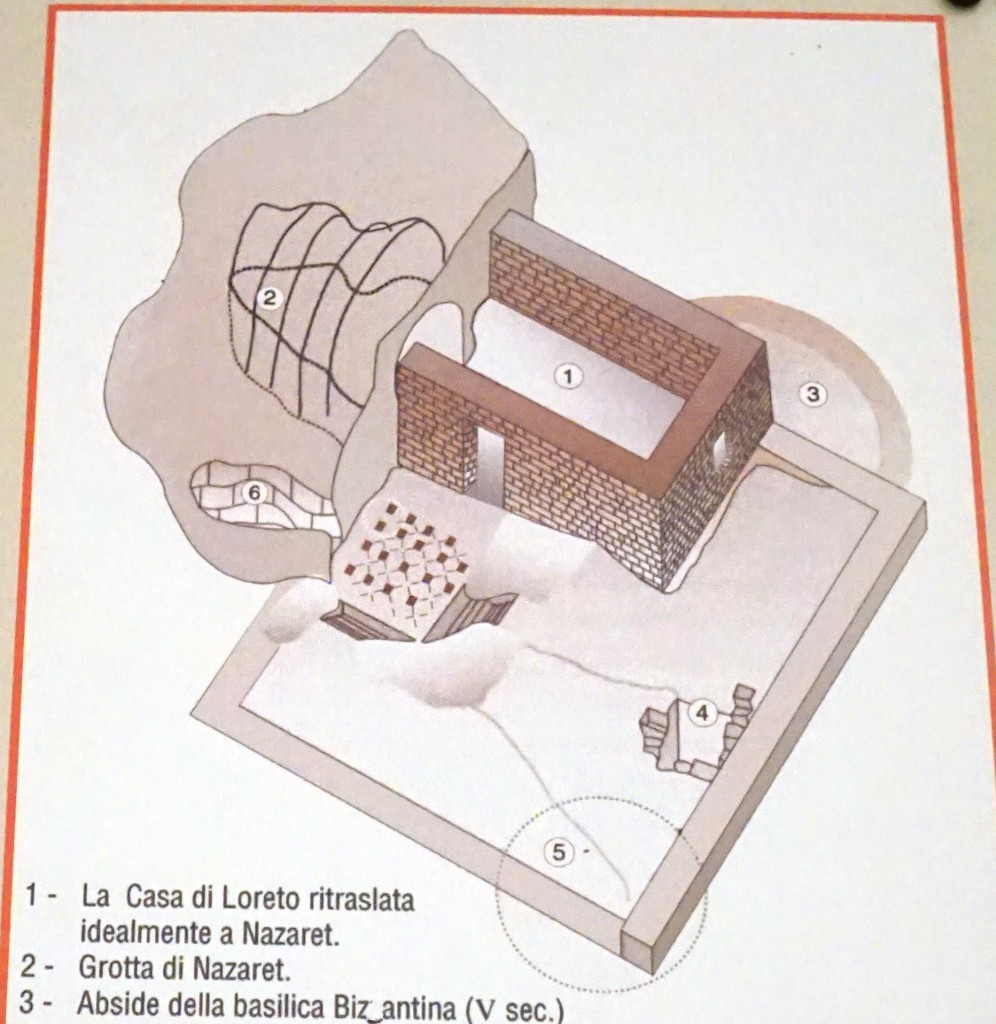
Holy House original location
It is thought to have been originally built in the city of Nazareth. The house currently has only three walls because research suggests that the fourth wall was made up of the stone grotto found under the Basilica of the Annunciation in Nazareth. Therefore, the remaining house consisted of three 16″ thick brick walls and was 31.25′ long by 13.4′ wide with is a single 7.4’.5″ door and one window.
Why do many believe this is Mary’s home and how did it come to be in Loreto?
The answer to that question is a tale of history, mysteries and miracles.
- After The Blessed Mother’s Assumption, early Christians came to venerate the home where God became man.
- 312-336: Empress Helena mother of Constantine made a pilgrimage to Nazareth to protect the holy places of Our Lord and directed that a basilica be erected over the place of Annunciation. Mary’s home and the grotto became part of the crypt of the new church. The Basilica protecting Mary’s home was considered one of the holiest sites of pilgrimage in Early Christendom.
- 1090: The Muslim Seljukian Turks invaded the Holy Land, intent on destroying anything sacred to Christians including the Basilica in Nazareth. Despite the destruction to the Basilica, the Holy House and grotto were left intact.
- 1096: The Crusades began and a small trickle of Christian pilgrims kept the devotion of the Holy House alive.
- 1100: The Crusaders built a second Basilica.
- 1219: As historical evidence of the house’s existence, it is documented that St. Francis of Assisi visits and prays at the site in Nazareth

Basilicas that have been built over the original grotto
Note: In the early years of the 13th century St. Francis of Assisi established a monastery at Sirolo, north of Recanati close to Loreto. To a group of puzzled friars, Francis foretold that before the close of that century, a sanctuary would be built near there that the faithful would come from all over the world to visit. This prophecy proved true when the Holy House of Loreto allegedly appeared on Dec. 10, 1294
- 1253: As additional evidence of historical references to the house. St. Louis IX, King of France, heard Mass in the same chamber where it was claimed that the Annunciation took place.
- 1263: Muslims again overpowered the Crusaders and destroyed the Basilica. Miraculously, the “Holy House” once again survived the assault.
- 1291: The defeated Christians Crusaders began their retreat leaving the “Holy House” unprotected.
- May 10, 1291: The First Relocation: Tradition tells us the “Holy House of Nazareth” was raised from its foundations in Nazareth and transported by Angels from Palestine to Tersatto in what was known as Dalmatia and is now Croatia.

Holy House no foundation
At that time, the pastor of the Church of St. George at Tersatto was dismayed by the sudden presence of a strange shrine- like building that had appeared in the midst of his parish. Finding no rational explanation, he prayed for enlightenment. In response to his prayer, The Blessed Virgin Mary appeared to him and confirmed that this was the Holy House of Nazareth and it was brought here through the Power of God, for its protection, and included an altar that was consecrated by the first Holy Father, St. Peter.
The Governor of the province was a devout man and immediately dispatched his emissaries to Nazareth, and they reported that the Holy House had mysteriously disappeared from that location.
His emissaries reported that the length and breadth of the walls of the dwelling found at Tersatto corresponded exactly with the “Holy House” foundation that was beneath the former Basilica of the Annunciation in Nazareth. In addition, the house found at Tersatto was built of limestone, mortar and cedar wood just as the Holy House was reported to be constructed of, consistent with many dwellings in Nazareth. Notably, cedar wood was commonplace in Nazareth, but almost unobtainable in Dalmatia.
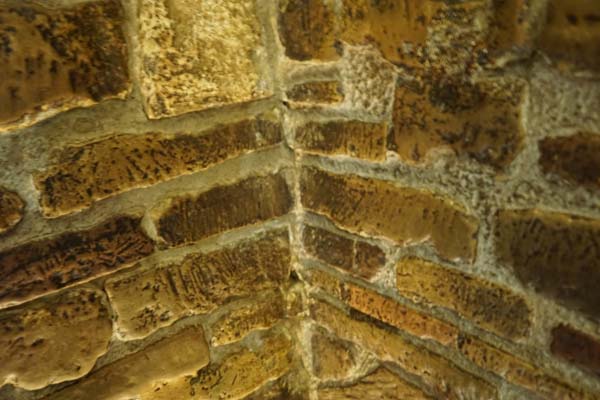
Holy House bricks
- December 10, 1294: The Second Relocation: Presumably, in response to a Muslim invasion and threat, The “Holy House” disappeared from Tersatto.
Tradition tells us that shepherds around Tersotto, reported witnessing the house being borne aloft by Angels and carried across the Adriatic Sea. It is well documented that it was at this time reported to have appeared in a wooded area, four miles from Recanati, Italy.
NOTE: Current studies have developed a more rational hypothesis of a rescue by sea and land that seems unlikely to have been successful without special assistance from above. More details can be found at the website for the shrine.
Thousands of people began to make pilgrimages to Loreto.
Unfortunately, the crowds lured bandits to the surrounding forest and it became too dangerous for pilgrims to visit.
- Third Relocation: Overnight, the house was allegedly miraculously moved to an open meadow on the Antici brother’s property in Recanati.
The Antici brothers fought over who owned the actual property the shrine was located on. The quarrel led to pilgrims abandoning the site.
- Fourth Relocation: Once again, it was purported that divine intervention led to the “The Holy House” miraculously reaching its’ final destination on Loreto Hill.
The final and current location of “The Holy House of Loreto” is just a few miles away from its original location and very close to the village of Recanati, just as St. Francis had prophesized.
Immediately the government of Recanati sent sixteen reputable citizens to the Holy Land to investigate the situation. They discovered that the original location of “The Holy House of Nazareth” was still venerated. Upon examination, the foundation of “The Holy House of Nazareth” corresponded exactly to the “Holy House of Loreto”. In addition, just like the emissaries for the Governor of Tersatto discovered, bricks and construction style of the local Nazarene homes were identical to the “The Holy House of Loreto”, whereas the local construction and materials of Loreto buildings were completely dissimilar.
The Recanati representatives were convinced; this was the House of the Holy Family. They returned to Loreto and shared their findings and confirmed the hopes of church and local leadership and the populace that Mary’s home had miraculously been brought to their stewardship by the Will of God.
- 1295: The local church and villagers build a strong wall to protect the shrine and it remains in Loreto to this day and also is once again part of a great Basilica.
As St. Francis prophesied, pilgrims came from all over the world to venerate “The Holy House of Loreto”.
- 1296: Mary appears to a saintly hermit in the Loreto area and confirms the authenticity of the shrine.

Marble Chapel over the Holy House
Special Points of Interest
- The Basilica of the Holy Shrine has become one of the greatest shrines to Our Lady in the world.
- Over 2,000 holy people including 200 canonized saints, beatified saints and venerable children of the Church have journeyed there to pray .
- Some of the saints that have visited “The Holy House of Loreto” are St. Ignatius Loyola, St. Francis Xavier, St. John Berchmans, St. Philip Neri, St. Francis de Sales, St. John Capistrano, St. Clement Hofbauer, St. Alphonsus de Liguori, St. Louis de Montfort, St. Benedict Joseph Labre, St. John Neumann, St. John Bosco, St. Therese, Blessed Maximilian Kolbe, Mother Cabrini.
- More than fifty Popes have issued Bulls and briefs testifying to its authenticity. Hundreds of Papal documents have granted it privileges, exemptions and authorizations to receive benefits, etc. In 1669 it was given a Mass of its own in the Missal. One of the five litanies approved for public recitation is called after it, the Litany of Loreto.( http://catholicism.org/loreto-house.html)
- Three popes were miraculously cured at the shrine.

Praying along the marble skirt
Many who have visited this special shrine, whether they were Popes or pilgrims, saints or sinners, have experienced the Holiness of the space, especially in the room purported to be the place of the Annunciation. It is well worth a visit to see for yourself.

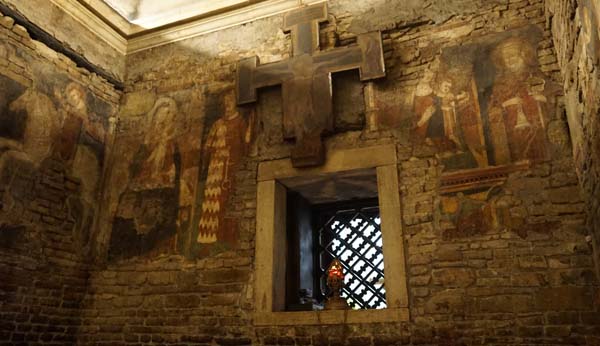
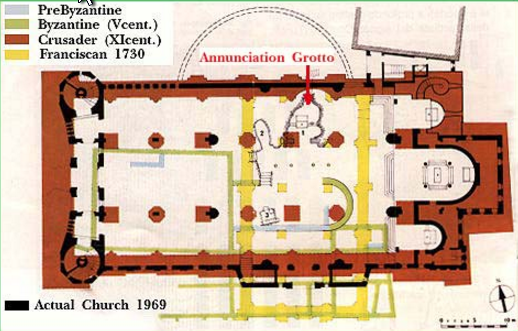
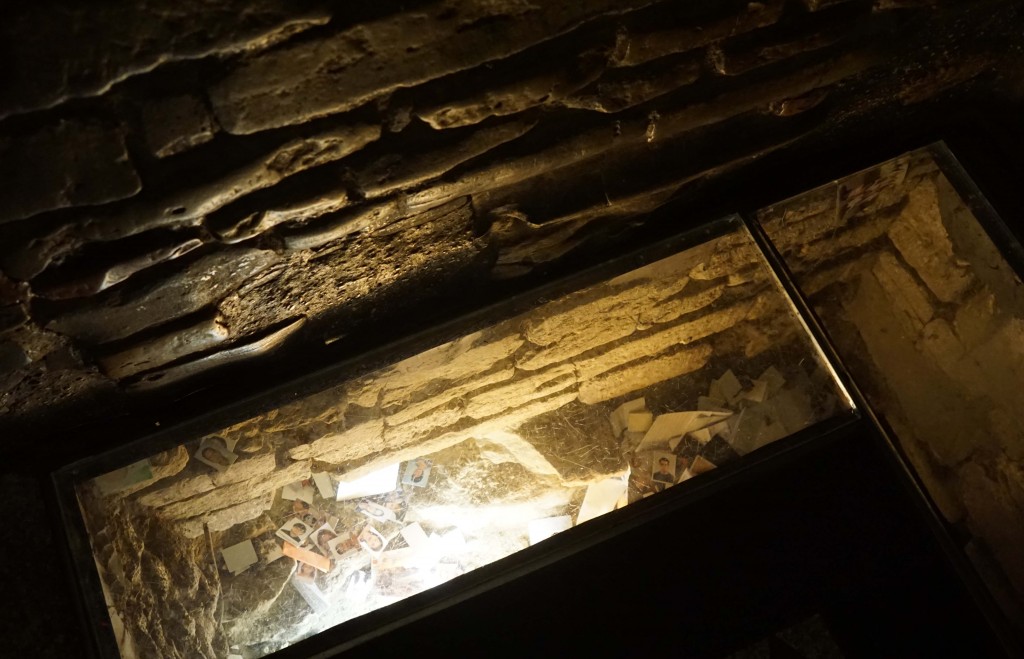
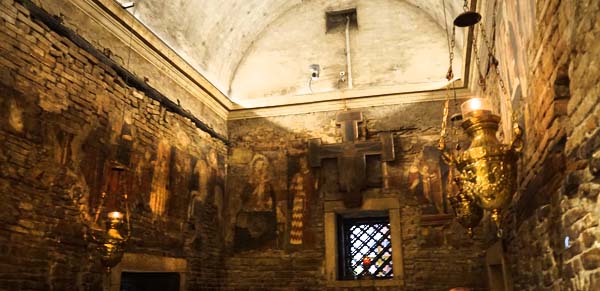
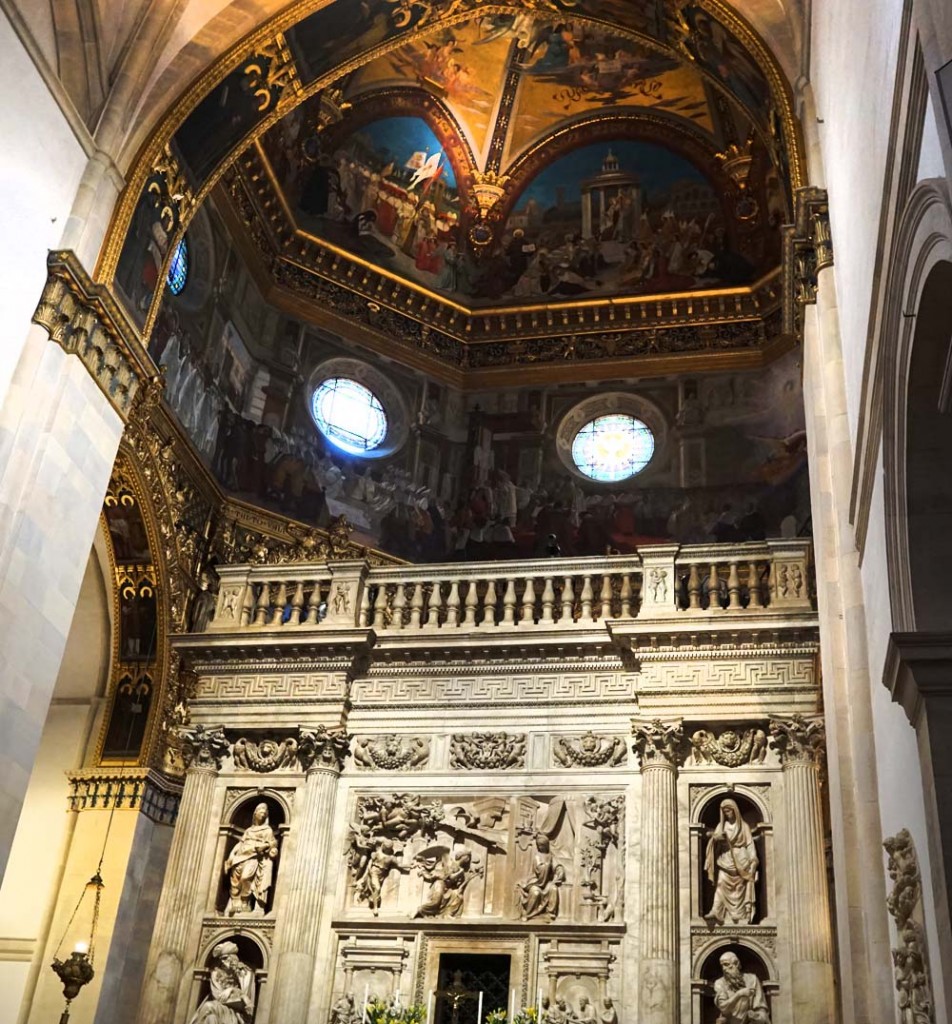
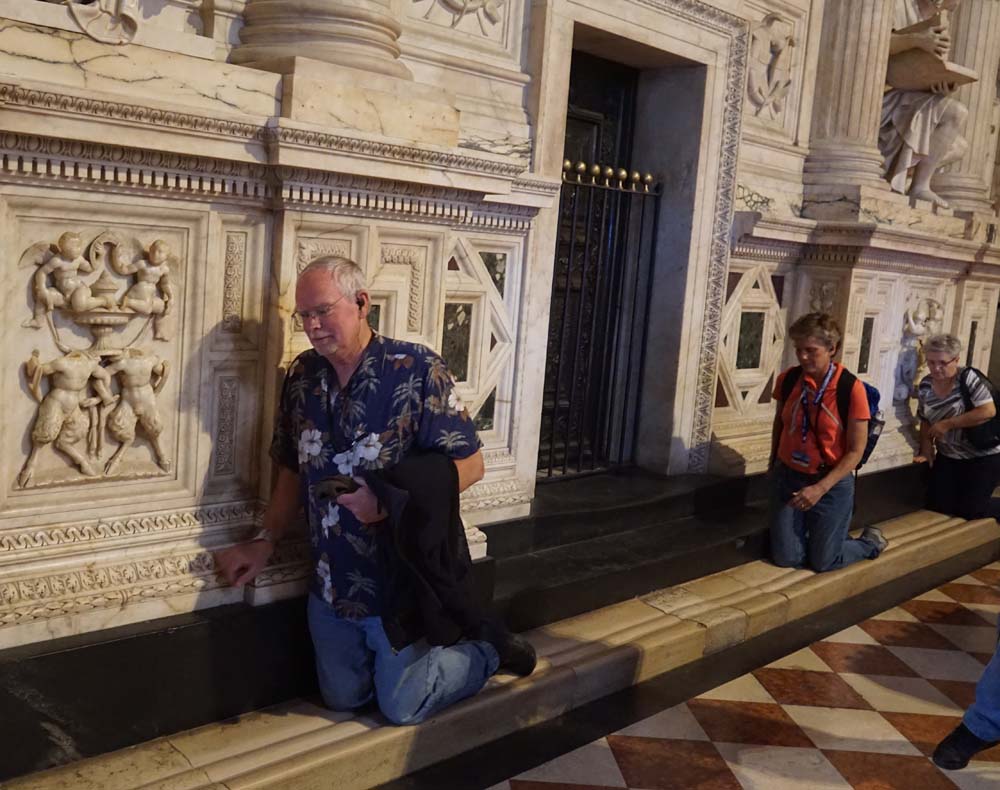
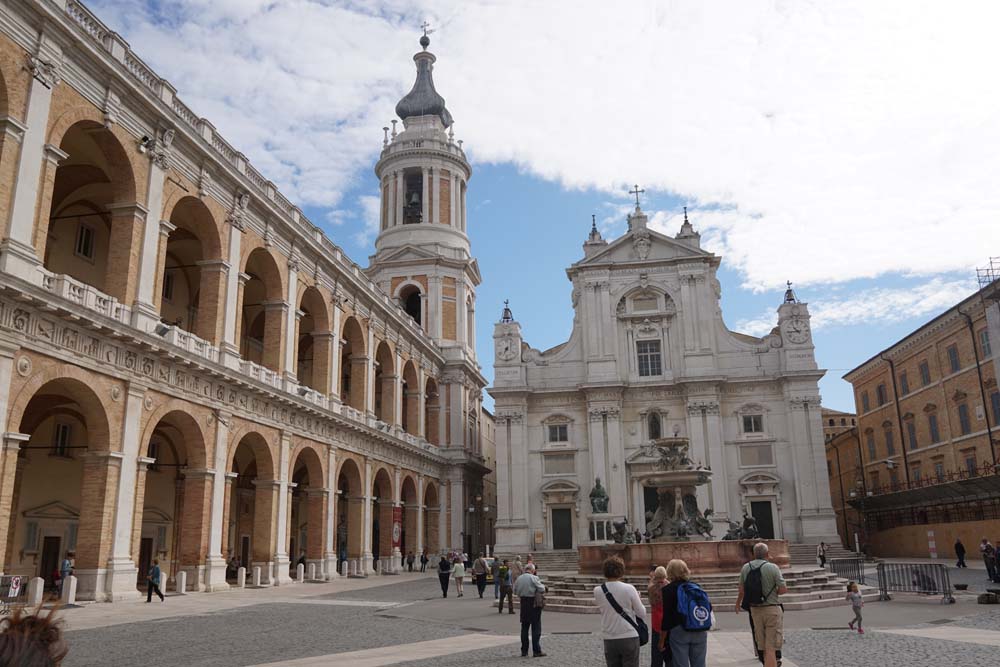

.jpg)
